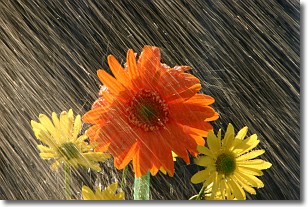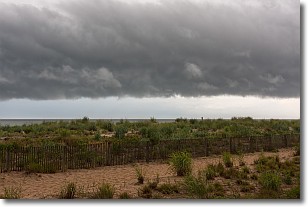Weather Alert in Texas
Flood Watch issued June 11 at 3:06AM CDT until June 12 at 7:00PM CDT by NWS Houston/Galveston TX
AREAS AFFECTED: Houston; Trinity; Madison; Walker; Burleson; Brazos; Washington; Grimes
DESCRIPTION: Continuing rounds of thunderstorms will bring more rain to Southeast Texas. At this time, expected storms highlight areas north of the Houston metro as most likely to see storms with high rain rates and potential for flash flooding today, particularly street flooding in more urban locations like Bryan/College Station and Huntsville. However, all of Southeast Texas should continue to monitor forecasts and conditions today and the rest of this week. Depending on how storm trends evolve and expectations for future rounds of rain develop, this watch may need to be expanded southward, including the Houston metro. * WHAT...Flooding caused by excessive rainfall is possible. * WHERE...A portion of southeast Texas, including the following counties, Brazos, Burleson, Grimes, Houston, Madison, Trinity, Walker and Washington. * WHEN...Through Thursday evening. * IMPACTS...The initial flooding threat will likely come as street flooding or flooding of low-lying and/or poor drainage locations in urban areas such as Bryan/College Station and Huntsville, if they experience storms with high rain rates. As rounds of rain continue to accumulate, a broader flash flooding threat may begin to emerge. Excessive runoff may result in flooding of rivers, creeks, streams, and other low-lying and flood-prone locations. * ADDITIONAL DETAILS... - Multiplle rounds of thunderstorms, with the potential for both high rain rates and accumulation of heavy rain over time. - http://www.weather.gov/safety/flood
INSTRUCTION: You should monitor later forecasts and be alert for possible Flood Warnings. Those living in areas prone to flooding should be prepared to take action should flooding develop.
Want more detail? Get the Complete 7 Day and Night Detailed Forecast!
Current U.S. National Radar--Current
The Current National Weather Radar is shown below with a UTC Time (subtract 5 hours from UTC to get Eastern Time).

National Weather Forecast--Current
The Current National Weather Forecast and National Weather Map are shown below.

National Weather Forecast for Tomorrow
Tomorrow National Weather Forecast and Tomorrow National Weather Map are show below.

North America Water Vapor (Moisture)
This map shows recent moisture content over North America. Bright and colored areas show high moisture (ie, clouds); brown indicates very little moisture present; black indicates no moisture.

Weather Topic: What is Precipitation?
Home - Education - Precipitation - Precipitation
 Next Topic: Rain
Next Topic: Rain
Precipitation can refer to many different forms of water that
may fall from clouds. Precipitation occurs after a cloud has become saturated to
the point where its water particles are more dense than the air below the cloud.
In most cases, precipitation will reach the ground, but it is not uncommon for
precipitation to evaporate before it reaches the earth's surface.
When precipitation evaporates before it contacts the ground it is called Virga.
Graupel, hail, sleet, rain, drizzle, and snow are forms of precipitation, but fog
and mist are not considered precipitation because the water vapor which
constitutes them isn't dense enough to fall to the ground.
Next Topic: Rain
Weather Topic: What are Shelf Clouds?
Home - Education - Cloud Types - Shelf Clouds
 Next Topic: Sleet
Next Topic: Sleet
A shelf cloud is similar to a wall cloud, but forms at the front
of a storm cloud, instead of at the rear, where wall clouds form.
A shelf cloud is caused by a series of events set into motion by the advancing
storm; first, cool air settles along the ground where precipitation has just fallen.
As the cool air is brought in, the warmer air is displaced, and rises above it,
because it is less dense. When the warmer air reaches the bottom of the storm cloud,
it begins to cool again, and the resulting condensation is a visible shelf cloud.
Next Topic: Sleet
Current conditions powered by WeatherAPI.com




